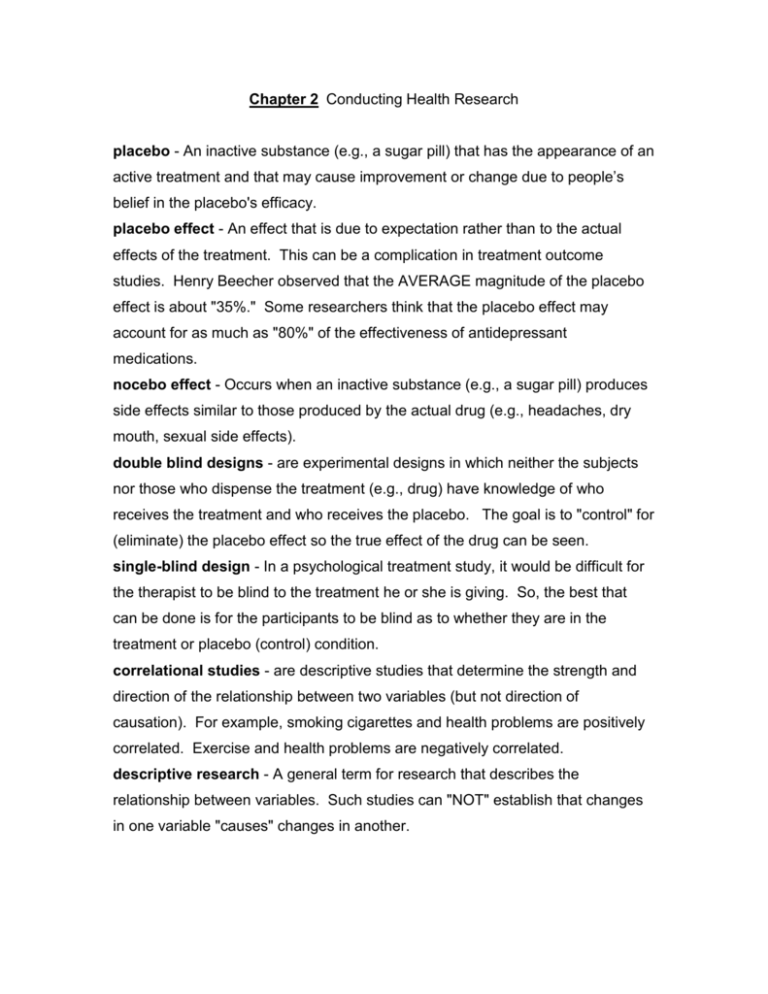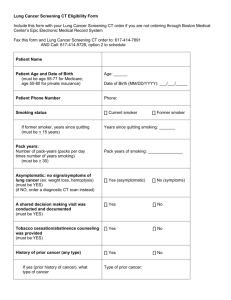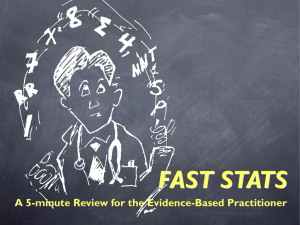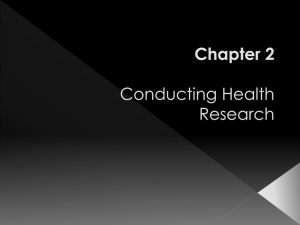Chapter 2
advertisement

Chapter 2 Conducting Health Research placebo - An inactive substance (e.g., a sugar pill) that has the appearance of an active treatment and that may cause improvement or change due to people’s belief in the placebo's efficacy. placebo effect - An effect that is due to expectation rather than to the actual effects of the treatment. This can be a complication in treatment outcome studies. Henry Beecher observed that the AVERAGE magnitude of the placebo effect is about "35%." Some researchers think that the placebo effect may account for as much as "80%" of the effectiveness of antidepressant medications. nocebo effect - Occurs when an inactive substance (e.g., a sugar pill) produces side effects similar to those produced by the actual drug (e.g., headaches, dry mouth, sexual side effects). double blind designs - are experimental designs in which neither the subjects nor those who dispense the treatment (e.g., drug) have knowledge of who receives the treatment and who receives the placebo. The goal is to "control" for (eliminate) the placebo effect so the true effect of the drug can be seen. single-blind design - In a psychological treatment study, it would be difficult for the therapist to be blind to the treatment he or she is giving. So, the best that can be done is for the participants to be blind as to whether they are in the treatment or placebo (control) condition. correlational studies - are descriptive studies that determine the strength and direction of the relationship between two variables (but not direction of causation). For example, smoking cigarettes and health problems are positively correlated. Exercise and health problems are negatively correlated. descriptive research - A general term for research that describes the relationship between variables. Such studies can "NOT" establish that changes in one variable "causes" changes in another. correlation coefficient - A number that ranges from +1 (both variables increase or decrease together) to -1 (as one variable increases, the other decreases). A correlation of "0" means no relationship at all. risk factor - Any characteristic or condition that occurs with greater frequency in people with a disease than it does in people free from that disease. Smoking is a "risk factor" for respiratory diseases such as lung cancer. cross-sectional study - A research design in which groups of subjects of different ages (e.g., 20, 30, 40 year olds) are studied at one point in time. A difficulty is that we can't be sure if group differences are due to actual age changes OR if the groups differ because of a "cohort" effect. longitudinal study - A type of research design in which one group of subjects is followed over time (e.g., 30 years). Better than cross sectional because the same people are followed, BUT, very expensive and time consuming to conduct. experiments - involve randomly assigning persons to groups (e.g., treatment X or treatment Y) and comparing the outcomes. Experiments "CAN" tell us about "cause and effect" (causality). independent variable - The variable in an experiment that is manipulated by the experimenter (e.g., drug vs. placebo). Its effect on the dependent variable (e.g., depression level) is then measured. dependent variable - The variable in an experiment (e.g., depression level) that is measured to see if the independent variable had an effect. experimental group - The group that gets the treatment (e.g., a new drug). control group - The group that gets treated exactly the same as the experimental group "except" for the treatment (e.g., gets placebo). atherosclerosis - The formation of plaque within the arteries. This might be a dependent variable in a cardiac risk factor experiment. ex post facto designs - Look like experiments but there is no random assignment, the independent variable (groups) are "pre-existing," for example, males vs. females or smokers vs. non smokers. These are common in health psychology because we often can't manipulate the variables of interest. epidemiology - A branch of medicine that investigates the frequency of various diseases in a population and the factors related to them. prevalence - refers to the proportion of a population that has a disease or disorder at a specific point in time (e.g., the prevalence of depressive disorders is 5%). incidence - refers to the frequency at which new cases of a disease or disorder are identified during a specified period of time. For example, the 1 year incidence for depression is 2% (in a year, two new cases are diagnosed for every 100 people in the population). observational studies - Epidemiologists use methods similar to those used in psychology. However, the names may differ. prospective studies - begin with collecting data on a disease-free group of subjects (e.g., smokers and non smokers). They are followed over time to see if smokers develop more disease (like a longitudinal study). cohort effect - A cohort is a group of people who are born at the same time and, as a result, share similar life experiences (e.g., many "baby boomers" experimented with hallucinogenic drugs). retrospective studies - begin with a group that has a disease (e.g., lung cancer). Information about their histories (e.g., did they smoke?) is collected to see if a relationship exists. (like a backwards longitudinal study). case-control study - A retrospective study which also includes a group of similar people who don't have the disease (controls) to help clarify what specific factors may have led to the disease (e.g., lung cancer). self-selection - subjects being allowed, in some manner, to determine their own placement in either the experimental or the control group. This, of course, must be avoided. clinical trial - (randomized controlled trial) Just like an experiment. People with a condition (e.g., depression) are randomly assigned to a treatment (drug) or control (placebo) condition to see if the treatment (drug) has an effect greater than the placebo. Regarded as the "gold standard" of research designs. John Snow - was an early epidemiologist. During the 1848 outbreak of cholera in England, he studied which areas of the city had the highest rates of illness and determined that water being pumped from a polluted part of the river Thames was the cause. Alameda County Study - An ongoing epidemiological study that tracked people on a number of "health-related" behaviors such as getting enough sleep and not smoking. At the 5 1/2 year follow up, residents who practices a greater number of healthy behaviors had a lower "mortality" (death) rate. meta-analysis - A study in which results of many small studies (addressing the same question) are combined, allowing stronger conclusions to be drawn. risk factor approach - A long term epidemiological study that follows many people to identify risk factors. The "Framingham" study is an example in which several factors such as cholesterol level, blood pressure, and obesity were identified as risk factors in cardiovascular disease. absolute risk - A person's chances of developing a disease or disorder independent of any risk that other people may have for that disease or disorder. For example, the risk of a smoker dying from lung cancer is compared with the risk other people have of dying from lung cancer "independent" of any risk factors (also smoking) that those people may have. The risk appears small, about 1 in 1,000. relative risk - For example, the risk our smoker has for dying from lung cancer compared with the risk of other people who do NOT smoke. This seems more scary. In terms of relative risk (risk ratio) our smoker is 23 times more likely to die from cancer than are non smokers. dose-response relationship - One of the seven criteria for establishing causation. A direct, consistent relationship exists between a behavior (smoking) and a dependent variable (severity of lung disease). establishing causation - Even without a true experiment or clinical trial, causation between a risk factor and a disease can be inferred if a number of criteria are met (7 in our text). theory - A set of related assumptions from which testable hypotheses can be drawn. model - Basically, the same as theory. However, the term model is used in the early stages of theory development, before a large base of information has been assembled. reliability - The extent to which a test or other measuring instrument yields consistent results. Example, a group of people takes the same IQ test twice (at time 1 and time 2). If correlating the two sets of scores yields a high correlation (e.g., .90), then the test is reliable. validity - Refers to the extent to which a test or other measuring instrument measures what it is supposed to measure (what we think it measures). A person we know to be depressed should score high on a depression test and a person we know to be happy should score low.








